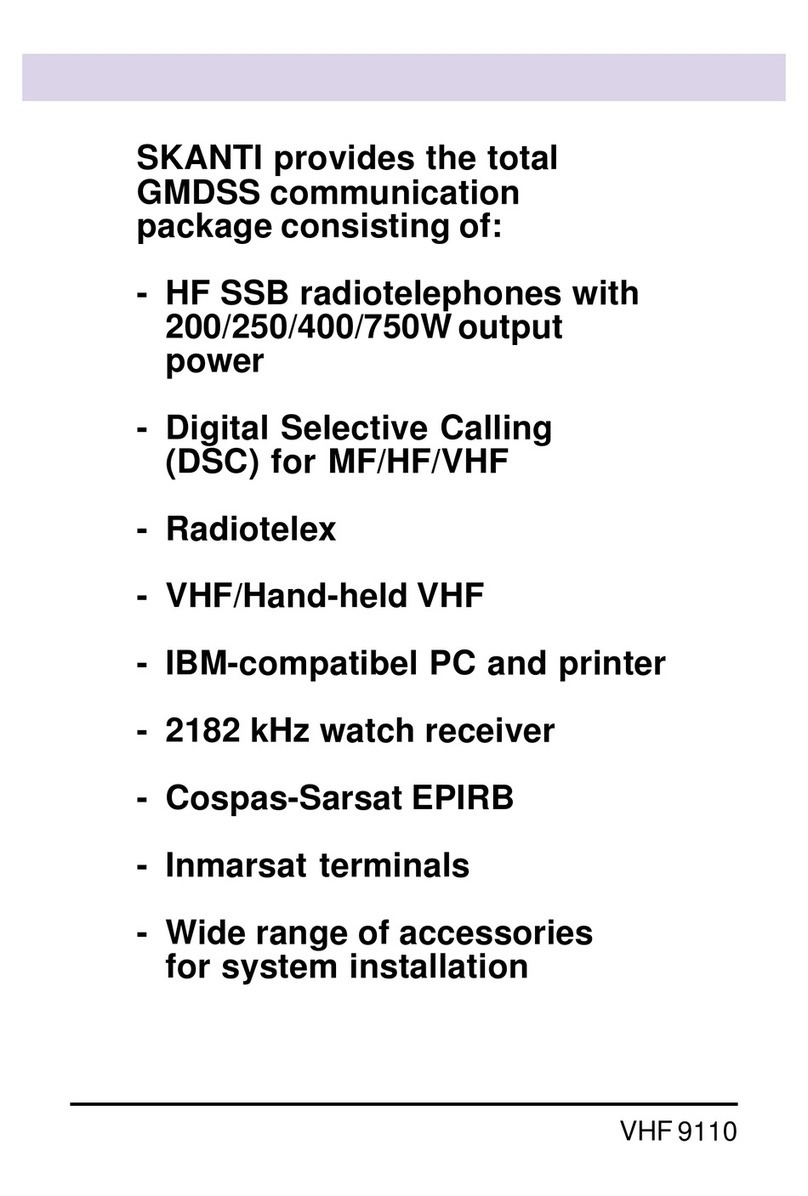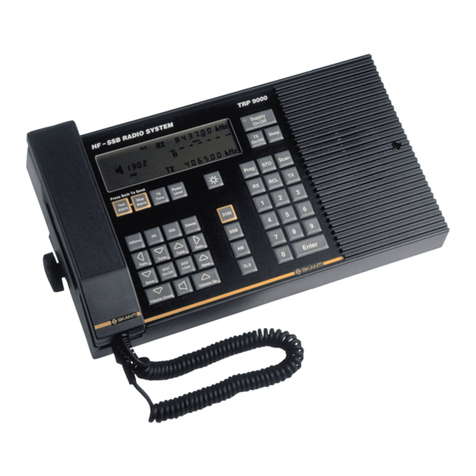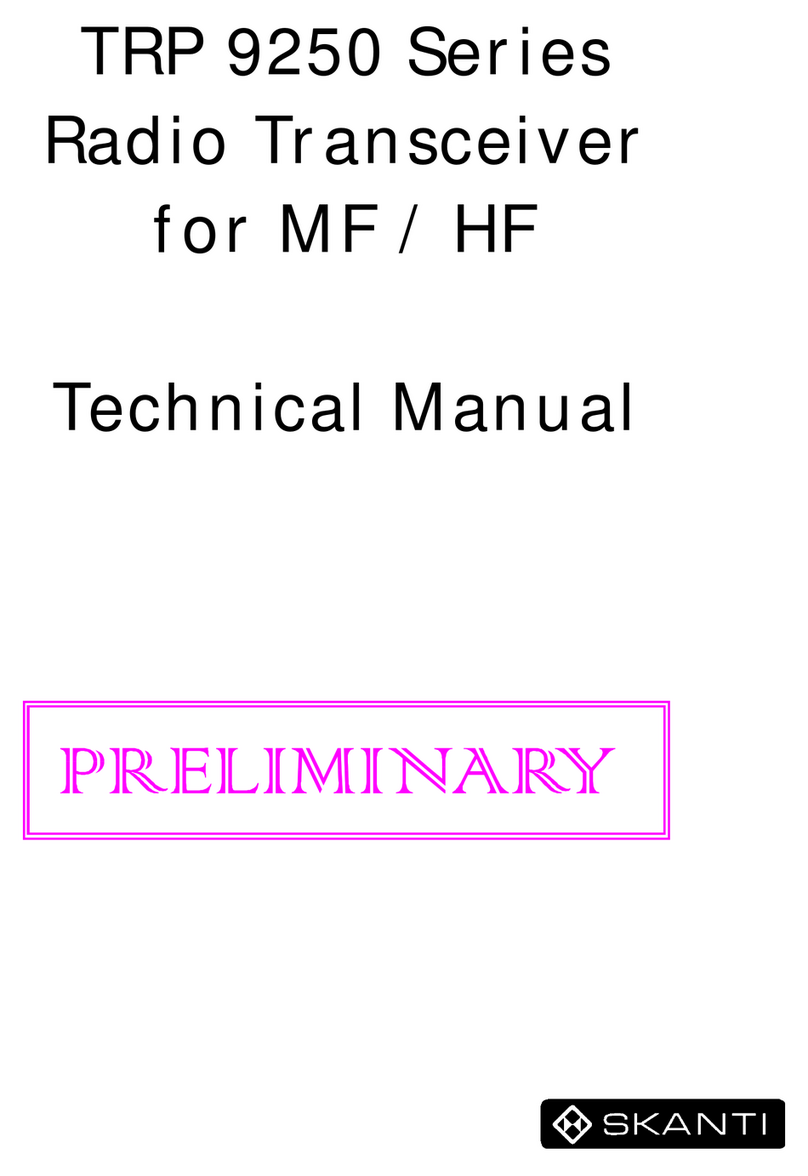2.3 Tuning to a Frequency Other than 2182 kHz
1. Set SUPPLY switch to TRANSMIT.
30 seconds after switching on the transmitter is ready for operation,
2. Set BAND switch to any band except 2182 kHz
3. Turn DIMMER control fully clockwise
4. If FREQUENCY NO display does not show zero, clear display using C key
of keyboard.
5. Look up desired frequency in frequency chart and read Frequency -No
6. Key Frequency No. into keyboard. The selected Frequency No. will be
displayed.
7. Set BAND switch to position indicated by flashing band indicator lamp.
If no flashing occurs the BAND switch is already correctly set.
8. Press TUNE button and adjust TUNING control for maximum deflection on
ANTENNA CURRENT meter.
9 Select desired type of service with MODE and POWER switches.
Transmitter is now ready for operation
NOTE: Transmission is inhibited if the mode setting does not correspond
with the frequency selected. On radiotelephone frequencies the transmitter
can be keyed only in the modes A3A, A3J, A3H, and TRANSMIT ALARM. On
wireless telegram frequencies the transmitter can be keyed only in the
modes Al, A2H, and Fl.
2.4 Operating Controls and their Functions
2.4.1 The SUPPLY switch has four positions
OFF Receiver and transmitter are switched off.
REGEIVE ONLY Power Pack is started up and supplies power to Receiver
(and grid bias to transmitter output valves). Remote
speaker of receiver is connected to receiver output.
STAND BY Power Pack supplies power to Receiver, Exciter, band
indicator, and filaments of transmitter output valves.
Remote speaker of receiver is connected to receiver
output.
TRANSMIT Transmitter can be keyed. Remote speaker of receiver is
disconnected.
NOTE:A built-in delay circuit protects the output valves of the
transmitter from being keyed for the first 30 sec. after switching to
STAND BY or TRANSMIT.
2 - 2
































